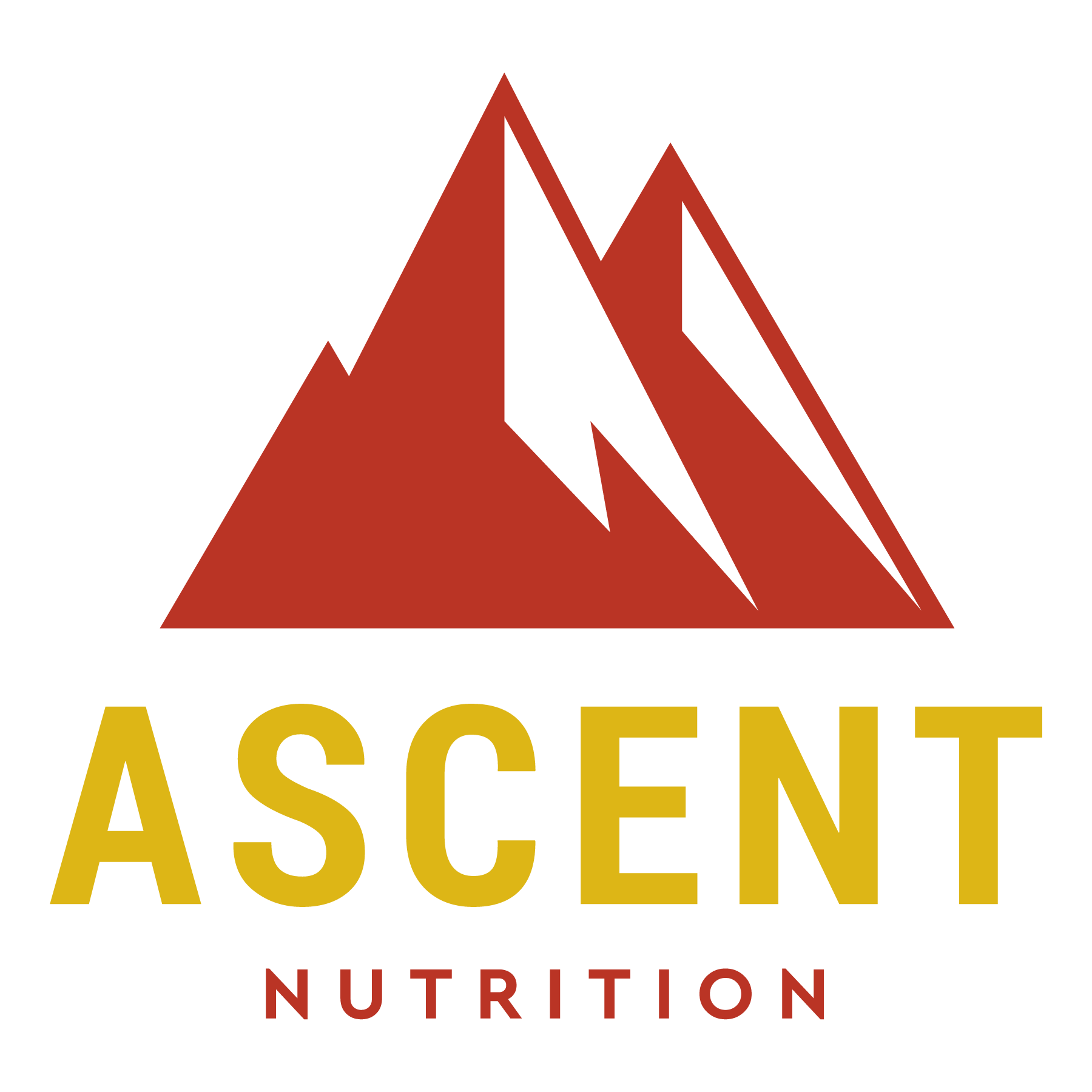With the news of baby formula shortages making headlines around the world, we as humans are provided a great opportunity to discuss various aspects of this very important conversation.
This includes information around pregnant and nursing mothers, proper brain development and IQ of babies and children, as well as the most important fatty acid needed for these processes to take place: DHA
DHA and The Human Brain
DHA, also known as docosahexaenoic acid and pronounced do-co-sa-hexa-e-no-ic acid, is an omega-3 polyunsaturated fatty acid and is a critical building block for the developing fetal nervous system, eyes and other organs.
DHA exists in every cell as well as every neuron in the entire body, making it one of the most necessary nutrients for proper human functioning and development.
We can think of DHA as the powerhouse for cognitive functioning, vision, neurogenesis, neuroplasticity, cardiovascular function and so much more.
The brain is over 60% fat with 90% of its omega-3 fatty acid needs being DHA. [1] This means that DHA is 10-20% of the total lipids in the brain and is especially potent in the gray matter of the brain. [1] The gray matter is the area responsible for processes in the brain such as movement control, memory and emotional processing. [2]
It is absolutely essential to maintain adequate levels for basic cognitive functioning, but even more essential when it is being supplied to a developing baby brain as well. In fact, a baby’s brain will triple in size by the time the baby reaches 1 year in age!
Additionally, during stages of its highest growth during the first few years, a baby’s brain will product up to 1,000,000 synapses per second! [3]
Needed Amounts of DHA for IQ and Cognition In Mothers and Children
During the last trimester of pregnancy, the intake levels of DHA from the mother to the womb increase to peak levels, which means supplementation to the mother is vital.
So what happens when optimal amounts of DHA are reached and maintained for both the mother and the developing fetus?
As stated before, not only will this supply the needs for our basic cognitive functioning and aid in supporting the developing fetus at higher levels of success, but getting enough DHA allows us to also tap into advanced cognitive development that is unique to us humans.
A Cochrane review done in 2006 showed that maternal omega-3 supplementation during pregnancy led to increased gestational age by 2.5 days which in turn resulted in an increased birth weight by 50 g and increased birth length by .5 cm. This is extremely important when thinking about the large number of premature births happening every year. [4]
Premature births are indeed the leading cause of death of babies in the United States and the babies that do survive often see lifelong health complications. As of 2020, the US sees around 380,000 premature births a year which is 1 in every 10 babies born. [5]
That being said, studies have shown that supplementing DHA at 500-1,000 mg per day can decrease the risk of having a premature baby (<37 weeks) by 11%, as well as lowering the risk of having an early premature baby (<34 weeks) by 42%. [6]
Other studies focused on the cognitive abilities of children that were given supplementation showed the lower the DHA intake of a mother during pregnancy, the higher the risk of suboptimal development. This goes both ways though, the higher the intake of DHA by the pregnant mother, the higher level of achievement is seen in the child’s social skills, fine motor and social development scores, visual recognition memory, and increased verbal intelligence later on in life. [7]
Furthermore, the testing revealed that increasing a pregnant mothers DHA intake by 1 g per day resulted in an increase in the intelligence quota (IQ) of infants aged 10-39 months by 0.8 to 1.8 points. [8]
Studies have also shown that supplementing the baby’s formula with small amounts of DHA supports healthy respiratory function in the lungs and nasal passages, as well as supporting gut health. [9]
As you can see, the benefits stemming from DHA supplementation can be extremely profound when taken in the right amounts. DHA is absolutely essential when laying new neuronal foundations for life in nursing and pregnant mothers. Anyone who is concerned with the proper growth and development of their child should seriously consider supplementing with DHA if they aren’t consuming adequate amounts in their diet.
DHA and Food
DHA cannot be synthesized in the body at sufficient enough levels and must be ingested through the diet. Typically, we get our DHA needs from seafood such as salmon, oysters and other types of fish, though there is another source that will be discussed below.
The Dietary Guide for Americans recommends about 8 oz of seafood per week or 8-12 oz for pregnant and nursing women, which is the equivalent of 250 mg of DHA/EPA per day. These amounts are not being met by the majority of the population though, and in fact the recent surveys show that 80% of the US population is not meeting this recommendation. [10]
The optimal levels for actually increasing one’s omega-3 index is 1,000-2,000 mg of DHA per day. [11]
This is something I discuss in more detail in my article The DHA Regimen. When these levels of DHA are consumed, many key physiological and neurological improvements have been seen in many different studies. [12]
In fact research has shown DHA supplementation during pregnancy leads to not only more effective cognitive functioning and neural development but also longer birth terms, increased birth weights, decreased depressive feelings in the third-trimester as well as postpartum, and much more. [13,14,15]
DHA is also present in other foods, but often in much lower quantities.
An average serving of salmon (3 oz) will provide about 1240 mg of DHA. [16]
This means that over a course of a week, a person would need to consume about 5.6-11.2 servings of salmon per week for a person to reach the 1,000-2,000 mg of DHA per day. (7,000-14,000 mg of DHA per week)
As of 2019, which was NOAA’s latest update on these numbers, the average American is only reaching a little over 2,400 mg of DHA per week. [17]
Eating 5.6 to 11.2 servings of salmon is attainable by some, but isn’t typically accomplished by the average person. There also resides the natural questions of actual DHA content in each serving of salmon, due to variations in food consumption by the salmon, the water quality the salmon is swimming in and concerns with heavy metal and other environmental pollutant contamination. The factory farmed fish should be avoided entirely and if one is to consume seafood, it should ideally be wild-caught in the cleanest waters possible.
For those that don’t consume fish or other foods that contain large amounts of DHA, adding in adequate doses of DHA for one’s intended health goals can be easily accomplished.
It can also be easily accomplished for those who do consume seafood, but want to reach 1,000-2,000 mg of DHA per day.
Nature’s Original Source of DHA
Nature’s original source of DHA comes from algae.
Fish eat the algae and incorporate the DHA fatty acids into their cellular membranes.
This means that we can go direct to the source for our DHA.
As I learned this information about the algae being the source, I was motivated to bring out the pure, original and clean source of DHA to more people.
Ascent Nutrition has its standards set for rare, unique, clean and hard-to-find nutrients that offer benefits to people that can actually be felt.
These pure, clean, authentic and unique traits are what I’ve sought after most when it comes to products I personally consume in my life and it is these same traits that are naturally present in the Algae Oil DHA product we proudly provide through Ascent Nutrition.

Ascent Nutrition’s Algae Oil DHA uses a specific wild-type strain of algae that is uniquely water extracted and naturally produces a clean, pure and potently concentrated golden algae DHA oil.
It is also 3rd party tested and has shown that it not only meets, but far exceeds cleanliness and safety standards set for microbial analysis testing and the testing of heavy metals like arsenic, cadmium, lead and mercury.
For mothers, children and all human alike, using omega 3s from a pure, clean source is of utmost importance for the proper structure and function of the brain, nervous system, eyes, cardiovascular system and more.
You can view Ascent Nutrition Algae Oil DHA here.
Lance Schuttler, CEO and Owner of Ascent Nutrition
References
[1] https://www.ncbi.nlm.nih.gov/pmc/articles/PMC4772061/
[2] https://www.ncbi.nlm.nih.gov/books/NBK553239/
[3] https://developingchild.harvard.edu/science/key-concepts/brain-architecture/
[4] https://pubmed.ncbi.nlm.nih.gov/16856006/
[5] https://www.cdc.gov/reproductivehealth/maternalinfanthealth/pretermbirth.htm
[6] https://www.cochrane.org/news/new-research-finds-omega-3-fatty-acids-reduce-risk-premature-birth
[7] https://www.ncbi.nlm.nih.gov/pmc/articles/PMC3738999/
[8] https://pubmed.ncbi.nlm.nih.gov/16242603/
[9] https://bmcpediatr.biomedcentral.com/articles/10.1186/1471-2431-14-168
[10] https://www.dietaryguidelines.gov/
[11] https://academic.oup.com/ajcn/article/110/4/1034/5545309?
[12] https://pubmed.ncbi.nlm.nih.gov/16296399/
[13] https://www.ncbi.nlm.nih.gov/pmc/articles/PMC2581505/
[14] https://www.ncbi.nlm.nih.gov/pmc/articles/PMC4772061/
[15] https://www.ncbi.nlm.nih.gov/books/NBK553239/
[16] ods.od.nih.gov/…/Omega3FattyAcids-HealthProfessional
[17] https://media.fisheries.noaa.gov/2021-05/fus-2019-fact-sheet-v4.2-webready.pdf?null

